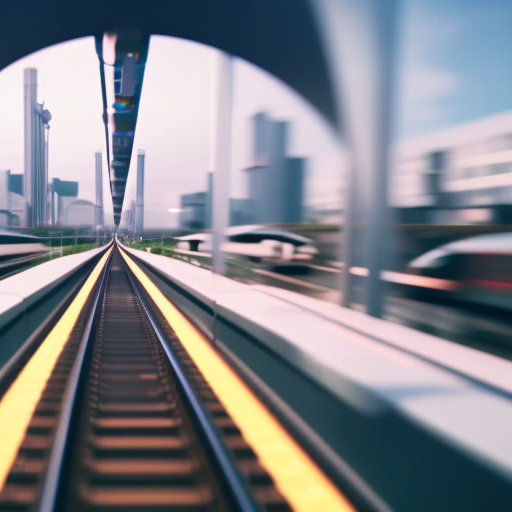Summary:
Hyperloop transportation is a futuristic mode of transportation that uses a system of low-pressure tubes to transport passengers and cargo at high speeds. It was first proposed by Elon Musk in 2013 and has since gained significant attention and investment. The concept involves using magnetic levitation and a near-vacuum environment to reduce air resistance and allow for speeds of up to 760 mph (1,220 km/h). Hyperloop technology has the potential to revolutionize transportation by offering faster, more efficient, and environmentally friendly travel options.
How does Hyperloop transportation work?
The Hyperloop system consists of a network of tubes with pods or capsules that travel inside them. These pods are propelled using electric motors and are designed to float above the track using magnetic levitation. The tubes are maintained at a low pressure to minimize air resistance, allowing the pods to travel at high speeds with minimal energy consumption. The pods are also equipped with air compressors to overcome the small amount of air that remains in the tube.
Advantages of Hyperloop transportation:
- Speed: Hyperloop transportation has the potential to reach speeds faster than any existing mode of transportation, including airplanes. This would significantly reduce travel times and increase efficiency.
- Energy efficiency: The low-pressure environment and magnetic levitation system used in Hyperloop technology result in minimal energy consumption compared to other transportation systems.
- Safety: The Hyperloop system is designed to be highly safe, with redundant systems and fail-safe mechanisms in place to ensure passenger safety.
- Environmentally friendly: Hyperloop transportation produces zero direct emissions, making it a greener alternative to traditional modes of transportation.
- Reduced congestion: The high speeds and efficiency of Hyperloop transportation can help alleviate traffic congestion in heavily populated areas.
Challenges and considerations:
While Hyperloop transportation holds great promise, there are several challenges and considerations that need to be addressed before it can become a widespread reality. These include:
- Cost: Building the necessary infrastructure for a Hyperloop system can be expensive, requiring significant investment.
- Regulatory hurdles: Implementing a new mode of transportation like Hyperloop involves navigating complex regulatory frameworks and obtaining necessary approvals.
- Technical feasibility: While the concept of Hyperloop transportation is promising, there are still technical challenges to overcome, such as ensuring passenger comfort, dealing with potential system failures, and addressing issues related to tube expansion and contraction due to temperature changes.
- Public acceptance: Introducing a new mode of transportation may face resistance from the public, who may have concerns about safety, reliability, and the impact on existing transportation systems.
Current developments and future prospects:
Since Elon Musk’s initial proposal, several companies have emerged to develop and commercialize Hyperloop technology. These companies are conducting research, testing prototypes, and working towards making Hyperloop transportation a reality. Some companies have even conducted successful test runs, demonstrating the feasibility of the technology. However, widespread implementation of Hyperloop transportation is still in the early stages and will require further investment, research, and collaboration between governments, regulatory bodies, and private companies.
In conclusion, Hyperloop transportation has the potential to revolutionize the way we travel, offering faster, more efficient, and environmentally friendly transportation options. While there are challenges to overcome, the progress made so far indicates that Hyperloop technology is moving closer to becoming a reality. With continued development and investment, we may soon witness the emergence of Hyperloop networks that could transform the way we move people and goods.












